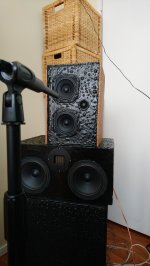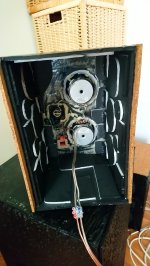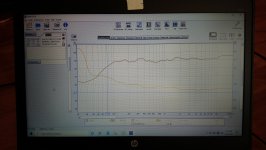The elevated treble is "air" for some, error for others. Our MMV.
True. If I listen on-axis it doesn't sound harsh. In fact, before I measured it i thought it was dropping off earlier than what it was.
Last edited:
Hey everyone sorry to revive an old Post, but this design might be what I'm looking for. Does anyone think this will work well for a super slim center channel? Thanks!
More details needed to build
Please forgive me if I am confused here but I would like to build these and want to do it correctly.
In the first post the OP says he is adding the tweeter to his previously built Nola clones. AFIK all the true Nola clones had an enclosed, ported lower TC9FD with a series 20uF cap between it, and the open back upper TC9FD.
A couple of posts later the OP says regarding the drivers, "THEY" are open back and in his ciruit diagram does not include the 20 uF cap that is part of the original Nola clones.
So, just to be sure I get the excellent results he is describing, would it be correct to build them with the crossover exactly as in the posted diagram with no 20 uF cap between the upper and lower TC9FDs and no back on the lower driver of the "enclosure" at all, making it a full open baffle design unlike the original Nola clones?
Not trying to be picky, just wanting to get it right; the posted FR looks great and I'll bet I like them better than my clones.
Thanks!
Jay
Please forgive me if I am confused here but I would like to build these and want to do it correctly.
In the first post the OP says he is adding the tweeter to his previously built Nola clones. AFIK all the true Nola clones had an enclosed, ported lower TC9FD with a series 20uF cap between it, and the open back upper TC9FD.
A couple of posts later the OP says regarding the drivers, "THEY" are open back and in his ciruit diagram does not include the 20 uF cap that is part of the original Nola clones.
So, just to be sure I get the excellent results he is describing, would it be correct to build them with the crossover exactly as in the posted diagram with no 20 uF cap between the upper and lower TC9FDs and no back on the lower driver of the "enclosure" at all, making it a full open baffle design unlike the original Nola clones?
Not trying to be picky, just wanting to get it right; the posted FR looks great and I'll bet I like them better than my clones.
Thanks!
Jay
Re-read post#1
per adason, "So I converted Nola Brio Trio to typical MTM with small Dayton dome. Quick and dirty crossover, measurement and listening lead to an amazing sounding neutral speaker. .."
post# 12 & #18 mtm open back cabinet
(no 20ufd cap)- this changes it to a mtm and different open back cabinet.
Read through the whole thread.
If you don't want to build a new cabinet for this mtm see post #24 page 3 nola brio clone cabinet , remove the 20 ufd cap, add new cap, coil and tweeter see post #1 for crossover
per adason, "So I converted Nola Brio Trio to typical MTM with small Dayton dome. Quick and dirty crossover, measurement and listening lead to an amazing sounding neutral speaker. .."
post# 12 & #18 mtm open back cabinet
(no 20ufd cap)- this changes it to a mtm and different open back cabinet.
Read through the whole thread.
If you don't want to build a new cabinet for this mtm see post #24 page 3 nola brio clone cabinet , remove the 20 ufd cap, add new cap, coil and tweeter see post #1 for crossover
Last edited:
Hi guys...started with the intent to go with the Nola Brio clone but stumbled on this thread...seems like there is a general consensus , if there is such a think on these forums, that the MTM version sounds better. i could go active but would like to keep it totally passive if possible. What would be the best way to put a cross over or what components might be needed to have the MTM do 150 Hz and above. I have a sub with the variable cross over that i can use for the low frequency duties. I have a mini-dsp 2x4 but really dont like it for main speakers due to all the Analog to digital and digital to analog conversations. I found it degrades the signal/ kills the sparkle etc.....help would be appreciated. thanks
Nautaloss MTM mod
I got a PM by a member asking me about the XO on Post #1. It piqued my interest and I did this over my lunch break. I revived my old Nautaloss speakers from years ago and decided to add a Dayton dome tweeter to them to make an MTM a la Brio Clone / Adason-mod. I only have the ND25FA-4 tweeter on hand and my TC9FDs are in a sealed spiral TL rather than open back so maybe the response is different? I could not get the XO schematic from Post #1 to be flat - in fact, it was better without the inverted tweeter. So just by measuring and adjusting and adding XO components over 30 minutes of tweaking, I was able to come up with the following XO without any simulation at all. Purely educated guess, confirmed by measurement. What I ended up with looks pretty good as it is about +/-2.5dB from about 150Hz to 20kHz, and the phase tracking is clean and smooth. Being all postive phase, the step response is quite good - a nice right triangle just like I like them.
I hope you all find this info is useful - it's not an expensvie XO to make.
Photo of the setup with a half trapezoidal foamcore baffle to reduce diffraction:
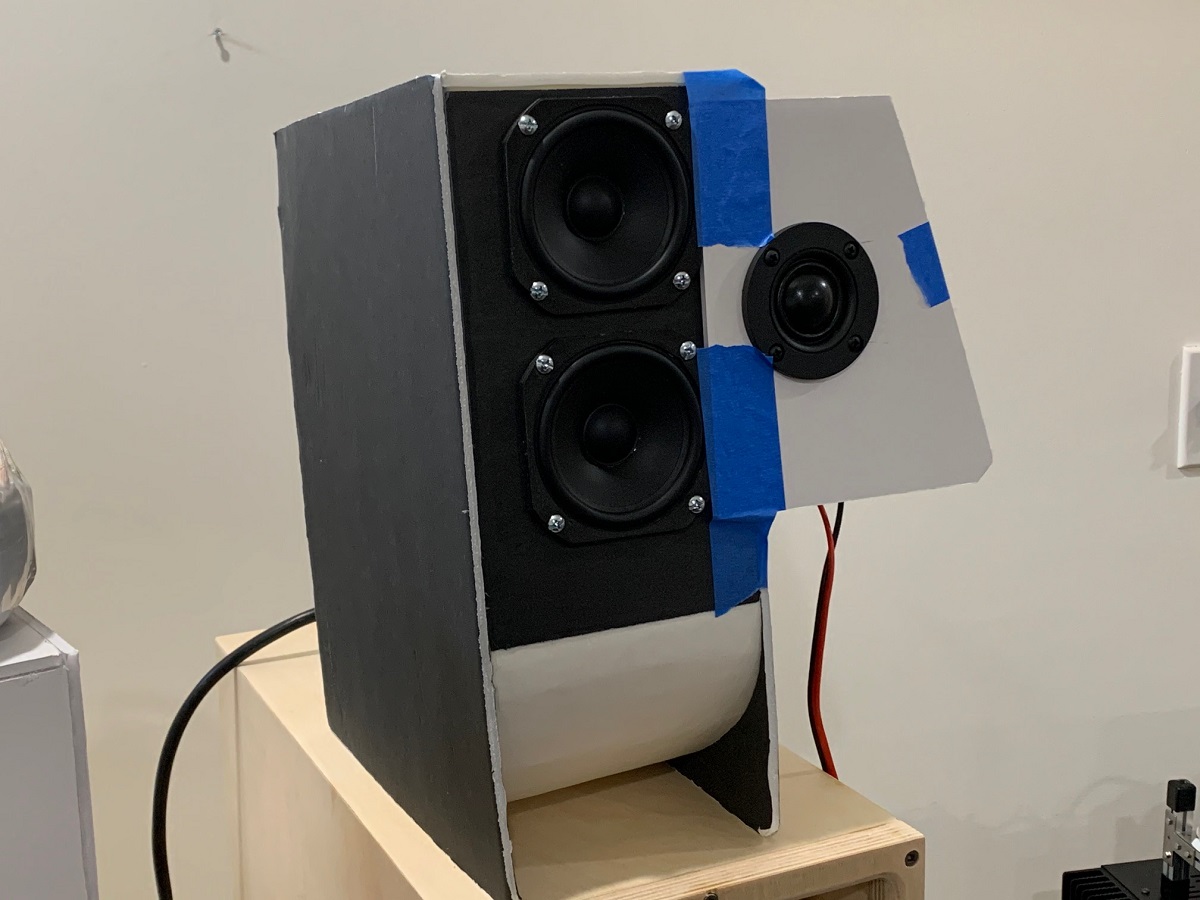
The speaker baffle is 13cm wide and driver CTC distance is 9cm vertical for the TC9FD and 9cm horizontal from TC9FD to ND25FA.
Final XO schematic:
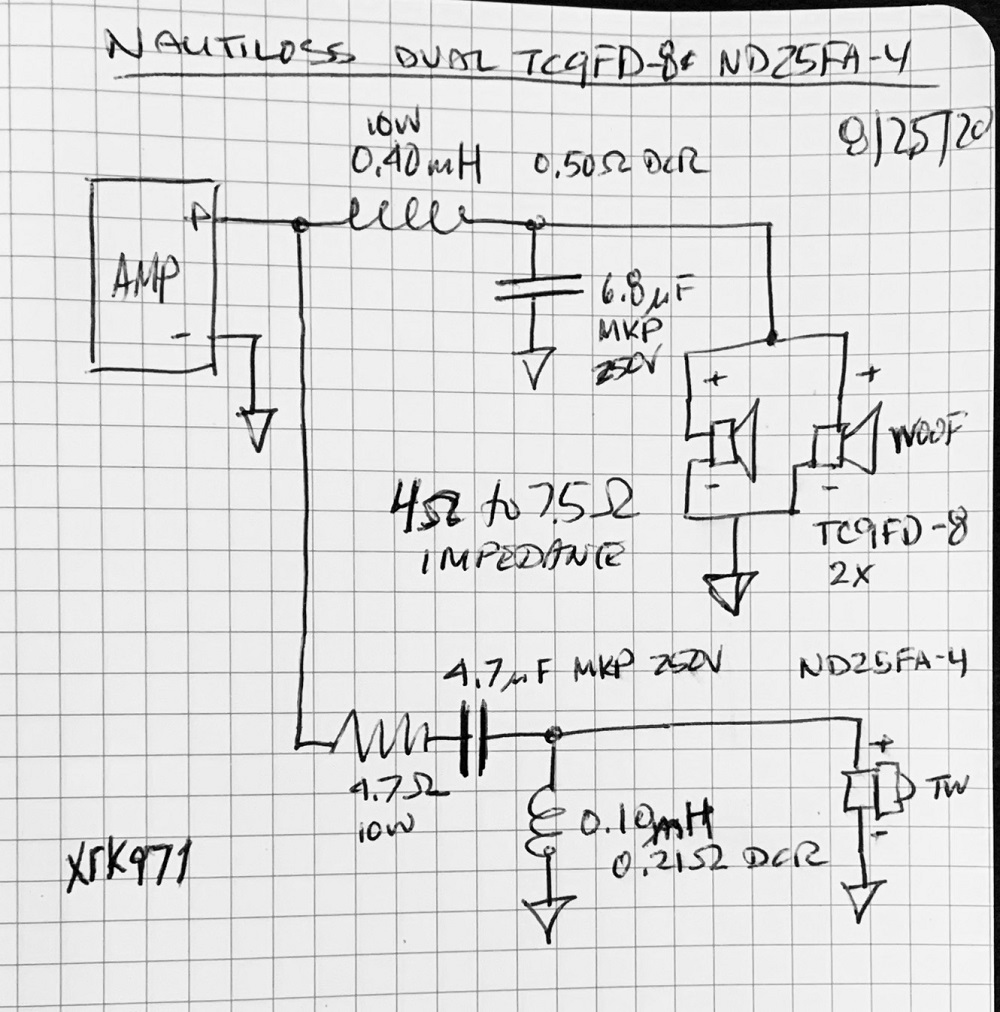
Wago connectorized temporary XO:
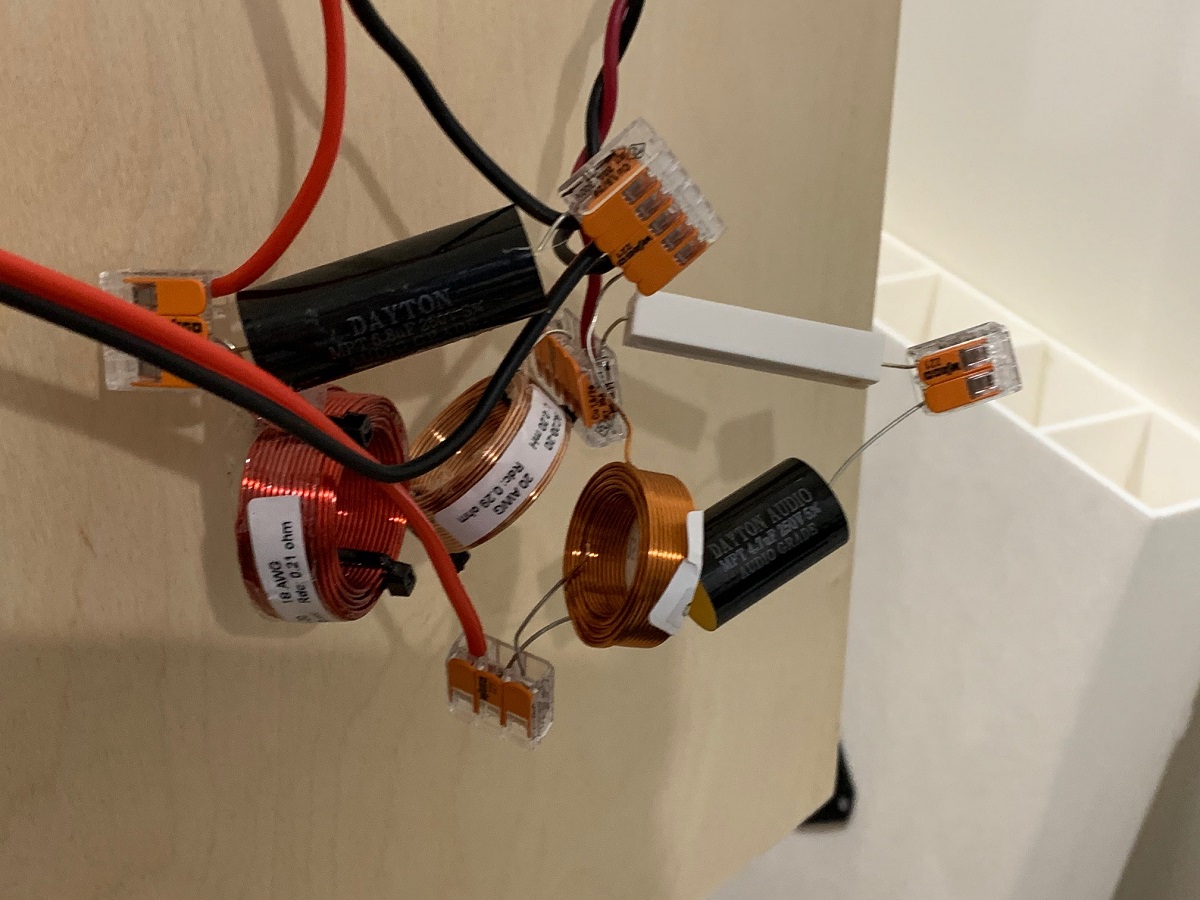
Measured frequency response at 0.5m and 2.0Vrms with mic on tweeter axis, 6-cycle freq dependent window (FDW) smoothing to remove room reflections:
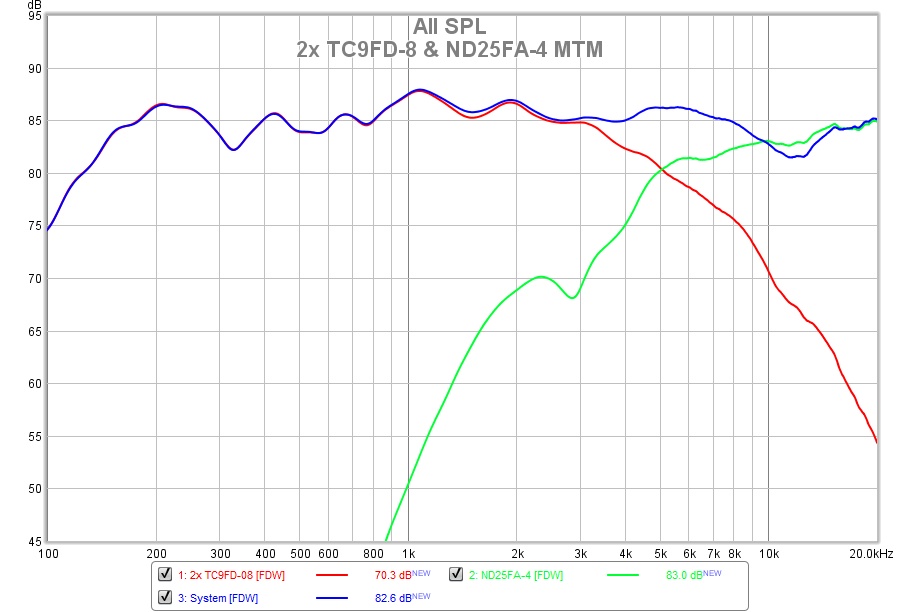
Measured acoustic phase:
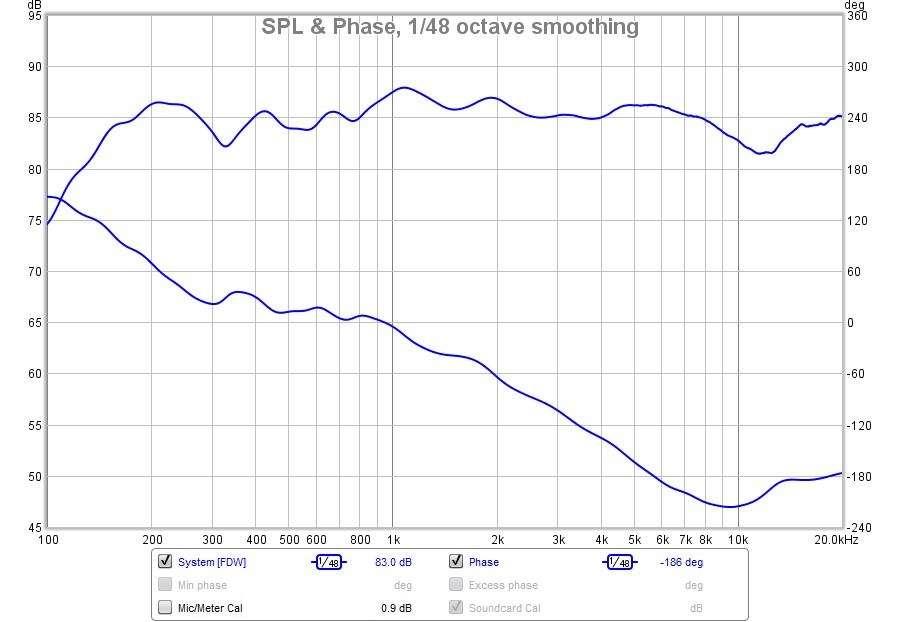
Measured Harmonic distortion (a lot of the stuff below 100Hz is the rumble and vent noise from the A/C system):
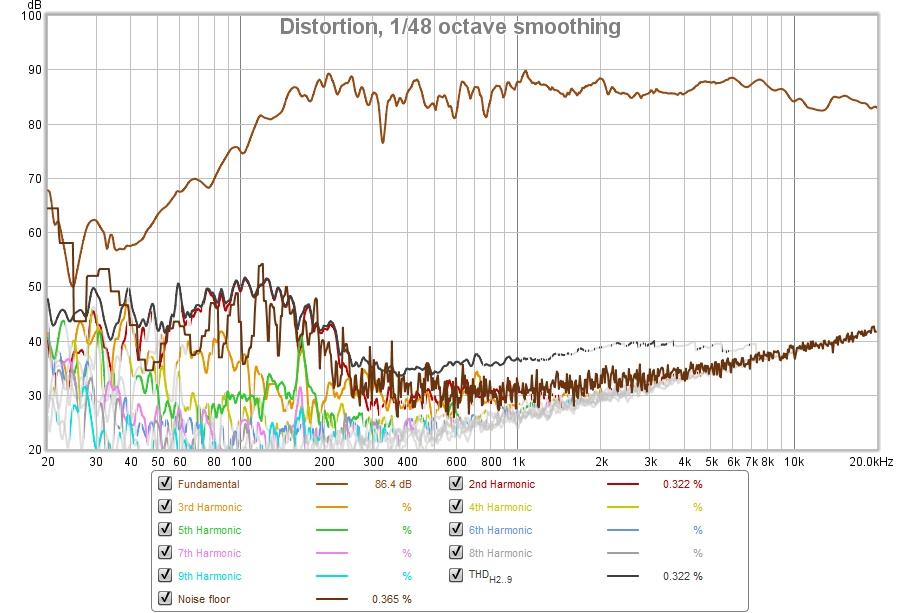
Measured Step Response - nice transient perfect shape:
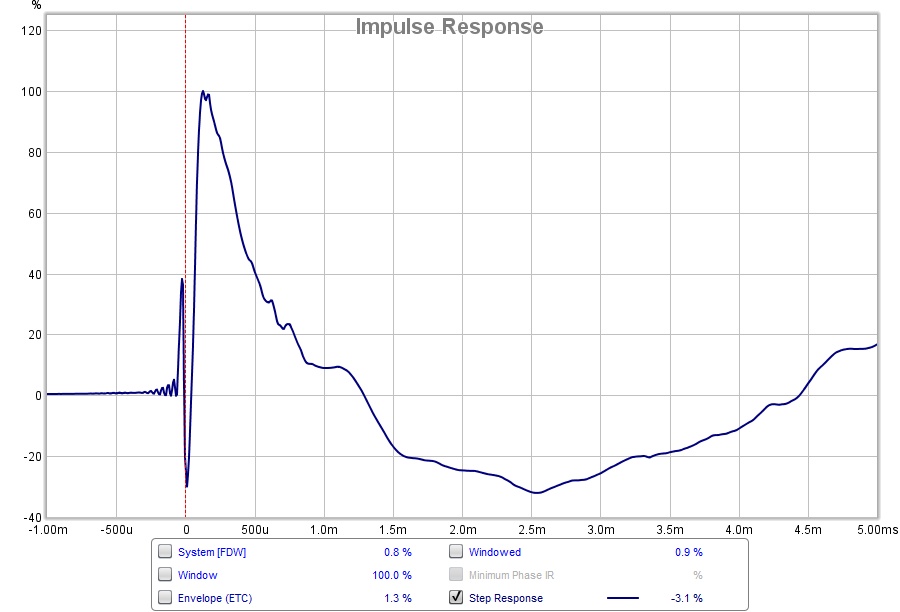
Measured Impedance (varies from 3.5ohms to 7.5ohms):
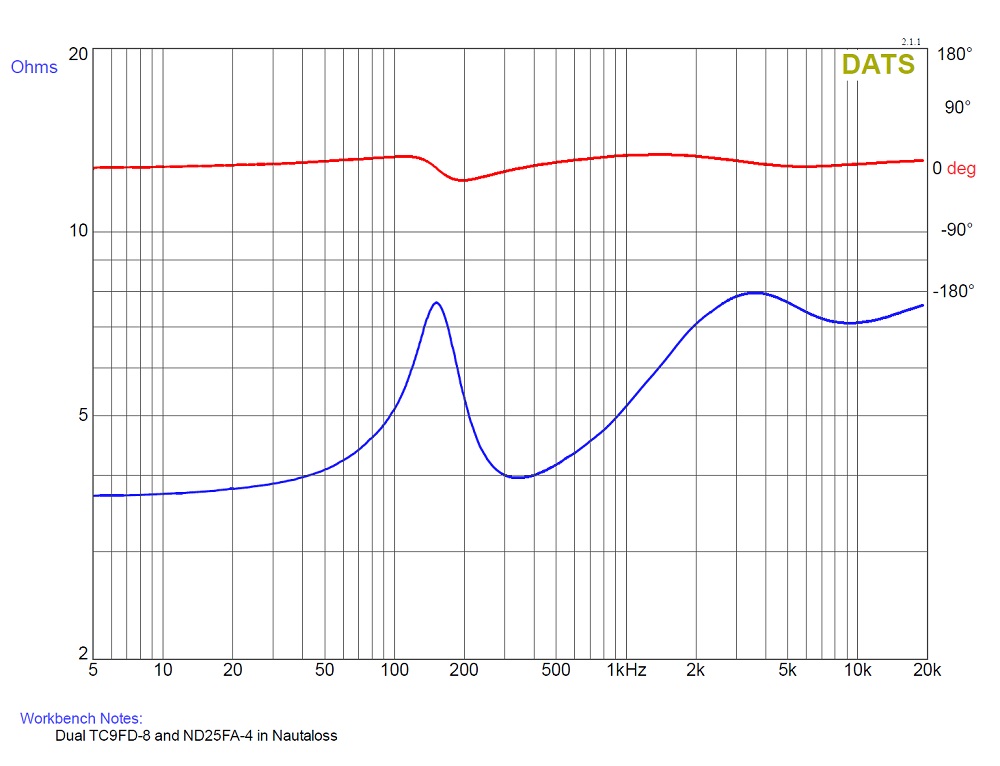
How does it sound? Well, very good with all genres as it is a neutrally voiced speaker. it could probably use a little more Harman tilt down to the right. It needs a subwoofer or woofer below 150Hz as the sealed Nautaloss has ni bass below 150Hz. It has pretty good sensitivity though at 85dB at 2.83v.
I got a PM by a member asking me about the XO on Post #1. It piqued my interest and I did this over my lunch break. I revived my old Nautaloss speakers from years ago and decided to add a Dayton dome tweeter to them to make an MTM a la Brio Clone / Adason-mod. I only have the ND25FA-4 tweeter on hand and my TC9FDs are in a sealed spiral TL rather than open back so maybe the response is different? I could not get the XO schematic from Post #1 to be flat - in fact, it was better without the inverted tweeter. So just by measuring and adjusting and adding XO components over 30 minutes of tweaking, I was able to come up with the following XO without any simulation at all. Purely educated guess, confirmed by measurement. What I ended up with looks pretty good as it is about +/-2.5dB from about 150Hz to 20kHz, and the phase tracking is clean and smooth. Being all postive phase, the step response is quite good - a nice right triangle just like I like them.
I hope you all find this info is useful - it's not an expensvie XO to make.
Photo of the setup with a half trapezoidal foamcore baffle to reduce diffraction:
The speaker baffle is 13cm wide and driver CTC distance is 9cm vertical for the TC9FD and 9cm horizontal from TC9FD to ND25FA.
Final XO schematic:
Wago connectorized temporary XO:
Measured frequency response at 0.5m and 2.0Vrms with mic on tweeter axis, 6-cycle freq dependent window (FDW) smoothing to remove room reflections:
Measured acoustic phase:
Measured Harmonic distortion (a lot of the stuff below 100Hz is the rumble and vent noise from the A/C system):
Measured Step Response - nice transient perfect shape:
Measured Impedance (varies from 3.5ohms to 7.5ohms):
How does it sound? Well, very good with all genres as it is a neutrally voiced speaker. it could probably use a little more Harman tilt down to the right. It needs a subwoofer or woofer below 150Hz as the sealed Nautaloss has ni bass below 150Hz. It has pretty good sensitivity though at 85dB at 2.83v.
Attachments
-
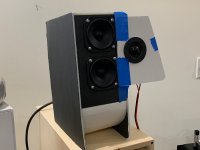 Nautaloss-dual-TC9FD-ND25FA-Build-photo-1.jpg186.4 KB · Views: 1,616
Nautaloss-dual-TC9FD-ND25FA-Build-photo-1.jpg186.4 KB · Views: 1,616 -
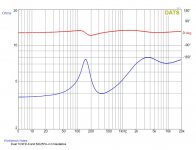 Nautaloss-dual-TC9FD-ND25FA-4-Imped-sweep.jpg129.3 KB · Views: 1,323
Nautaloss-dual-TC9FD-ND25FA-4-Imped-sweep.jpg129.3 KB · Views: 1,323 -
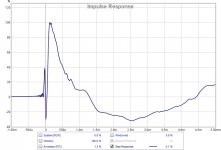 Nautaloss-dual-TC9FD-ND25FA-4-Step-Meaas.jpg85.7 KB · Views: 893
Nautaloss-dual-TC9FD-ND25FA-4-Step-Meaas.jpg85.7 KB · Views: 893 -
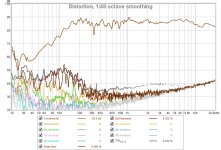 Nautaloss-dual-TC9FD-ND25FA-4-HD-Meas.jpg156.3 KB · Views: 889
Nautaloss-dual-TC9FD-ND25FA-4-HD-Meas.jpg156.3 KB · Views: 889 -
 Nautaloss-dual-TC9FD-ND25FA-4-Phase-Meas.jpg103.4 KB · Views: 1,354
Nautaloss-dual-TC9FD-ND25FA-4-Phase-Meas.jpg103.4 KB · Views: 1,354 -
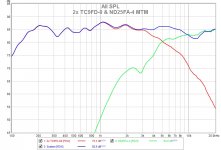 Nautaloss-dual-TC9FD-ND25FA-4-Freq-Meas-XO.jpg103.9 KB · Views: 2,099
Nautaloss-dual-TC9FD-ND25FA-4-Freq-Meas-XO.jpg103.9 KB · Views: 2,099 -
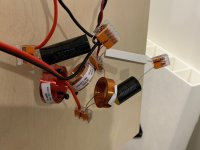 Nautaloss-dual-TC9FD-ND25FA-Build-photo-2.jpg267.8 KB · Views: 910
Nautaloss-dual-TC9FD-ND25FA-Build-photo-2.jpg267.8 KB · Views: 910 -
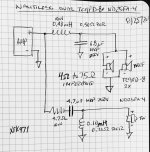 Nautaloss-dual-TC9FD-ND25FA-XO-Schematic.jpg271.3 KB · Views: 1,931
Nautaloss-dual-TC9FD-ND25FA-XO-Schematic.jpg271.3 KB · Views: 1,931
Last edited:
Hi X, great work. Thanks for the interest.
Ok, flat is relative term. I remeasured the speakers today, three years after, and they still measure the same, and there is still the same minimalistic crossover.
So not sure why it did not work for you. Different enclosure? Different spacing between drivers? It worked for kec.
Yes, there is slight tilt up, which I do not mind, once you listen far enough, tilt is gone. If you do not like the tilt, increase the resistor before the tweeter.
Remember, this was not meant to be high end perfect speaker. Its based on $20 drivers after all. It was mean as fun.
Yes, I keep the back open, and only use it from 150Hz up.
Cheers!
Ok, flat is relative term. I remeasured the speakers today, three years after, and they still measure the same, and there is still the same minimalistic crossover.
So not sure why it did not work for you. Different enclosure? Different spacing between drivers? It worked for kec.
Yes, there is slight tilt up, which I do not mind, once you listen far enough, tilt is gone. If you do not like the tilt, increase the resistor before the tweeter.
Remember, this was not meant to be high end perfect speaker. Its based on $20 drivers after all. It was mean as fun.
Yes, I keep the back open, and only use it from 150Hz up.
Cheers!
Attachments
Hi Adason,
I like your measurements looks flat to me. It must be the tweeter sideways offset?
I could not get it as close as yours and I had a broad cancellation dip (more like a moat) when the tweeter was reverse polarity. Your box is easy enough to build and I’ll try again another lunch break. I call these “lunch break” speakers. You can build and test during a lunch break.
I like your measurements looks flat to me. It must be the tweeter sideways offset?
I could not get it as close as yours and I had a broad cancellation dip (more like a moat) when the tweeter was reverse polarity. Your box is easy enough to build and I’ll try again another lunch break. I call these “lunch break” speakers. You can build and test during a lunch break.
Nice thread, nice builds!
Just wondering, if I had a large tweeter to combine with these, could I use some kind of camera obscura thing to cover it? Thinking of EV Sentry 100.
Just wondering, if I had a large tweeter to combine with these, could I use some kind of camera obscura thing to cover it? Thinking of EV Sentry 100.
I’m not sure what you mean by covering a tweeter with a pinhole aperture?
You don’t want to put anything in front of a tweeter unless you want major coloration. Or if it’s a properly designed waveguide.
You don’t want to put anything in front of a tweeter unless you want major coloration. Or if it’s a properly designed waveguide.
EV's Peerless paper cone tweeter and their hard dome tweeter used in Interface B and A "sounded fine" with reduced aperture size - a cleanly punched hole in felt "lens" (it may have been foam for the dome lens)
Here's the lens for the 2.5" Peerless paper cone tweeter -
https://img.canuckaudiomart.com/upl...oice-interface-b-speakers-wequalizer-mint.jpg
Here's the lens for the 2.5" Peerless paper cone tweeter -
https://img.canuckaudiomart.com/upl...oice-interface-b-speakers-wequalizer-mint.jpg
Hi Adason,
I like your measurements looks flat to me. It must be the tweeter sideways offset?
I could not get it as close as yours and I had a broad cancellation dip (more like a moat) when the tweeter was reverse polarity. Your box is easy enough to build and I’ll try again another lunch break. I call these “lunch break” speakers. You can build and test during a lunch break.
V,
If you've got FRD / ZMA for both drives I could work up something later this week.
Cheers,
Greg
Hi Greg,
Thanks. This was one speaker where I did not measure raw responses and ZMA’s and just tuned it by REW and trial and error. It’s already looking pretty good - not sure if there is more to do here. Also, this is not the final baffle yet as it was just a taped on tweeter addition.
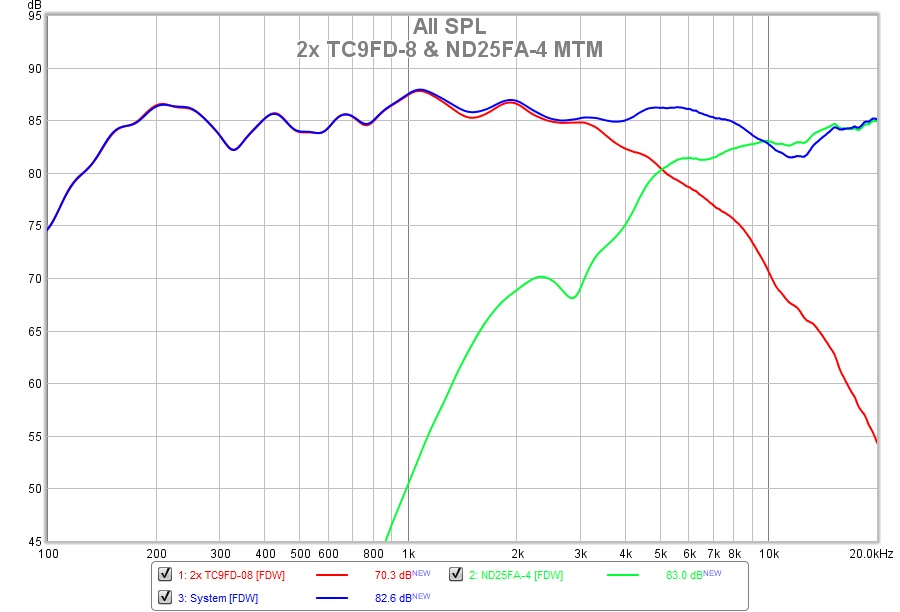
Thanks. This was one speaker where I did not measure raw responses and ZMA’s and just tuned it by REW and trial and error. It’s already looking pretty good - not sure if there is more to do here. Also, this is not the final baffle yet as it was just a taped on tweeter addition.
At XRK’s urging I am posting this here.
Question for the forum.
I am going to make a version of the Nola brio/trio clone + tweeters for pc speakers.
I plan to use ND20FB-4 and 2 TC9FD-8 with 3.3 cap and .2mh coil. Box w/ .5”,mdf roughly 15” high 5” wide by 7” deep.
Going to start open baffle, then enclose the bottom TC9FD, then try it all seal for prototype.
Running a dragonfly dac to a 2.1 plate amp (30 watts for r/l) that is highpassed at 100hz and a small sub (Voxel?) from about 150hz down.
Everything seems reasonable to purchase parts and begin.
Any modifications or improvements anyone would suggest?
Is this a good application for pc speakers?
Question for the forum.
I am going to make a version of the Nola brio/trio clone + tweeters for pc speakers.
I plan to use ND20FB-4 and 2 TC9FD-8 with 3.3 cap and .2mh coil. Box w/ .5”,mdf roughly 15” high 5” wide by 7” deep.
Going to start open baffle, then enclose the bottom TC9FD, then try it all seal for prototype.
Running a dragonfly dac to a 2.1 plate amp (30 watts for r/l) that is highpassed at 100hz and a small sub (Voxel?) from about 150hz down.
Everything seems reasonable to purchase parts and begin.
Any modifications or improvements anyone would suggest?
Is this a good application for pc speakers?
Why don't manufacturers still do this?
some still do, i.e. Wilson, Duntech...
- Home
- Loudspeakers
- Multi-Way
- MTM with TC9fd
